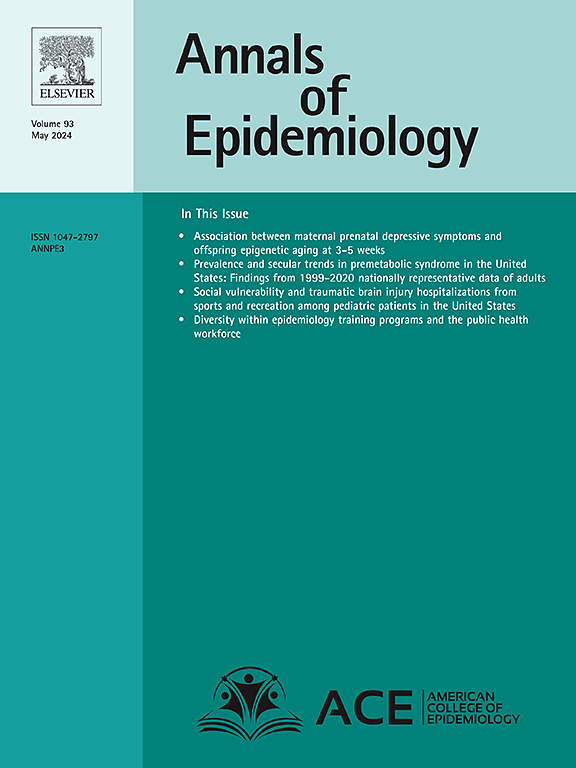缺铁性贫血与孕产妇严重发病率之间的关系:一项回顾性队列研究。
IF 3.3
3区 医学
Q1 PUBLIC, ENVIRONMENTAL & OCCUPATIONAL HEALTH
引用次数: 0
摘要
目的:我们研究了缺铁性贫血(IDA)与分娩期及产后一年内严重孕产妇发病率(SMM)之间的关系:在一项横跨 3 个州的回顾性队列研究中,我们使用改进的泊松回归模型计算了缺铁性贫血患者与非缺铁性贫血患者的 SMM 调整相对风险系数 (aRR):在 2459 106 人中,10.3%(n = 252 240)患有 IDA。IDA 患者输血和非输血 SMM 的发生率(分别为每万次分娩 329 例和 122 例)高于非 IDA 患者(分别为每万次分娩 33 例和 46 例)。IDA患者输血(aRR:8.2;95 % CI:7.9-8.5)和非输血SMM(aRR:1.9;95 % CI:1.8-2.0)的风险较高。因IDA而在分娩过程中输血和不输血SMM的每10,000例分娩的归因风险分别为29.5 (95 % CI: 28.9-30.0) 和5.7 (95 % CI: 5.3-6.2)。产后1年内,IDA患者发生非输血SMM的相对风险(aRR:1.3;95 % CI:1.2-1.3)高出30%:结论:IDA与SMM风险增加有关。结论:IDA 与 SMM 风险增加有关,解决孕妇的 IDA 问题可降低 SMM 发生率。本文章由计算机程序翻译,如有差异,请以英文原文为准。
Association between iron deficiency anemia and severe maternal morbidity: A retrospective cohort study
Purpose
We examined the association between iron deficiency anemia (IDA) and severe maternal morbidity (SMM) during delivery and up to 1-year postpartum.
Methods
In a retrospective cohort study across 3 states, we computed adjusted relative risks (aRR) for SMM comparing individuals with IDA versus those without, using modified Poisson regression models.
Results
Among 2459,106 individuals, 10.3 % (n = 252,240) had IDA. Individuals with IDA experienced higher rates of blood transfusion and non-transfusion SMM (329 and 122 per 10,000 deliveries, respectively) than those without IDA (33 and 46 per 10,000 deliveries, respectively). The risk of blood transfusion (aRR: 8.2; 95 % CI 7.9–8.5) and non-transfusion SMM (aRR: 1.9; 95 % CI: 1.8–2.0) were higher among individuals with IDA. The attributable risk per 10,000 deliveries due to IDA for blood transfusion and non-transfusion SMM during delivery were 29.5 (95 % CI: 28.9–30.0) and 5.7 (95 % CI: 5.3–6.2), respectively. Within 1-year postpartum, the relative risk of non-transfusion SMM (aRR:1.3; 95 % CI: 1.2–1.3) was 30 % higher among individuals with IDA.
Conclusion
IDA is associated with increased SMM risk. Addressing IDA in pregnant individuals may reduce SMM rates.
求助全文
通过发布文献求助,成功后即可免费获取论文全文。
去求助
来源期刊

Annals of Epidemiology
医学-公共卫生、环境卫生与职业卫生
CiteScore
7.40
自引率
1.80%
发文量
207
审稿时长
59 days
期刊介绍:
The journal emphasizes the application of epidemiologic methods to issues that affect the distribution and determinants of human illness in diverse contexts. Its primary focus is on chronic and acute conditions of diverse etiologies and of major importance to clinical medicine, public health, and health care delivery.
 求助内容:
求助内容: 应助结果提醒方式:
应助结果提醒方式:


